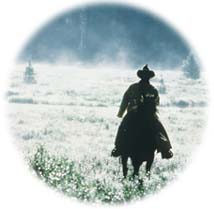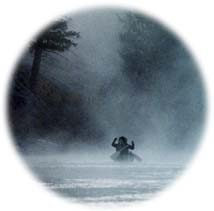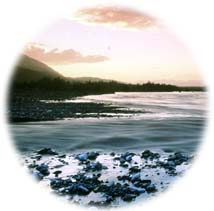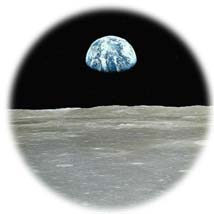|
|
|
|
|
|
"Leave it as it is. The ages have been at work on it and
man can only mar it."
PRESIDENT THEODORE ROOSEVELT, speech,
Grand Canyon, 1903, quoted in William Schwarz,
ed., Voices for the Wilderness, 1967
|
|
Wilderness Preservation Begins With the Kings of England
The word wilderness originated in the old English "wilddeorness", which meant "the place of wild deer". The first conscious effort to protect nature in the World was made by the kings of England in the Middle Ages.  They were motivated by a desire for private hunting preserves where they could hunt wild animals recreationally. But they learned very quickly that if they were to have animals to hunt they needed to protect the wildlife from poachers and the land from the villagers who would cut down the trees for firewood. They were motivated by a desire for private hunting preserves where they could hunt wild animals recreationally. But they learned very quickly that if they were to have animals to hunt they needed to protect the wildlife from poachers and the land from the villagers who would cut down the trees for firewood.
The idea of nature being something special and beautiful only really emerged in the 1800s when British artists such as John Constable and JMW Turner first started to paint the splendors of the natural world. Up until then almost all paintings had been of religious scenes or of human beings, so the idea of seeing the beauty in nature was something new. Wordsworth, one of England's premier poets, first started talking about the wonder of the natural world (before then, the natural world had been a scary, intimidating place). Increasingly the valuing of nature became an aspect of British culture.
But despite this, when British settlers came to North America and discovered the vast pristine lands of this new continent, they were completely overwhelmed. Their first reaction was to try and subdue the wilds. But soon their appreciation for the beauty and expansiveness of the land showed up in their writings, gradually germinating into the idea that the destiny of America was to carve itself out of the wilderness. The ability to contend with and live within wilderness became an integral part of the American identity. By the 1870s, this concept had expanded to such an extent that an awareness evolved of the importance of preserving some of the country's wilderness. Because without wilderness, Americans would lose what it meant to be American. That this idea should emerge into the American consciousness had much to do with how fast settlement was proceeding. For the first time the frontier no longer seemed infinite. Indeed the expansion of railways across the west, and the role they played in speeding the settlement of the land, was so rapid that for the first time wilderness was seen to be truly waning.
|
"The ability to contend with and live within wilderness became an integral part of the American identity."
|
|
As proof of this growing appreciation of wild nature, in 1872 Yellowstone, the world's first National Park, was created. At the time, the desire to protect this parkland also reflected monetary interests in the area. The country's railways, including Union Pacific, reasoned that if people heard about the beauty of Yellowstone, they would be attracted to visiting as tourists. To ensure this would occur, Union Pacific had several artists paint spectacular pictures of wild Yellowstone, of its canyons and geysers, to show to the wealthy populations of the Eastern United States and Europe. Obviously the railways hoped that such visitors would be inspired to ride their trains to Yellowstone and stay in their hotels while there. To them, creating a park made good economic sense.
From these beginnings a tradition evolved that nature should in fact be preserved for its beauty's sake. It was the writings of people like Ralph Waldo Emerson and especially John Muir, who in the 1890s formed the Sierra Club and led the campaign to preserve Yosemite National Park, that so inspired the public. Indeed, Muir's campaign to preserve Yosemite was the first citizen-led effort to protect wilderness in the world.
|
|
The idea of conservation and of protecting wild lands began to gain great favor when Teddy Roosevelt became president of the United States. Roosevelt was a great outdoorsman who truly valued nature, wildlife, and wilderness. He moved quickly to greatly enlarge the United States National Parks system, and to establish the National Forest system. Roosevelt was a great outdoorsman who truly valued nature, wildlife, and wilderness. He moved quickly to greatly enlarge the United States National Parks system, and to establish the National Forest system.
This US concept of national parks was copied by other countries around the world, especially Canada. Canada's first national park was created in the 1880s at Sulfur Springs, in what is now Banff, when the transcontinental Canadian Pacific Railway was being built. A few people building the railway discovered the area's hot springs and intended to make themselves rich. The Canadian government however, also recognized the tourism potential of the area and decided to move pre-emptively to create a small park there. Over the years, the idea of enlarging Banff National Park gained more favor as the CPR (like their US counterpart had earlier at Yellowstone) saw the value they could reap from tourism, by enticing people to come across the ocean and see the great wild spaces of Canada.
By the 1920s, more and more wealthy visitors were travelling by train across Canada and the United States to experience what it meant to be in the wilderness. At the time, the preferred version of "wilderness" was to stay in fine hotels and look out at nature through big windows. This mentality led to the commercialization of many of Canada's National Parks through the building of great hotels such as The Banff Springs and Chateau Lake Louise.
Soon however, the idea of protecting nature for nature's sake was furthered by American writers like Aldo Leopold, who in the 1930s talked about the need for a land ethic and the need to protect wilderness quickly. By then it was becoming clear that wild spaces were very much in retreat and unless rapid action was taken the wild country would be lost.
|
"By the 1920s, more and more wealthy visitors were travelling by train across Canada and the United States to experience what it meant to be in the wilderness."
In the late 1940s, global conservation took a major step forward with the beginning of the end of the British Empire in Africa. The British elite  had became used to hunting 'big game' here, and became concerned that once the African colonies were turned over to the local people, the wildlife would be slaughtered and the wild spaces that they valued would be lost. had became used to hunting 'big game' here, and became concerned that once the African colonies were turned over to the local people, the wildlife would be slaughtered and the wild spaces that they valued would be lost.
As a result, one of the last things the colonial power of Britain did was to establish great wildlife preserves there. This spawned the idea in the 1950s and the early 1960s of the need to protect large spaces for wildlife worldwide. It was at this time that the World Wildlife Fund (WWF) was founded. Eventually WWF was to become one of the largest conservation organisations in the world.
Meanwhile in America, concern over the rapid disappearance of wilderness was resulting in strong pressure being placed on government to preserve nature. This pressure was focused on great fights, such as the one to stop the proposed damming of the Grand Canyon. It also led to the passage of a truly historic piece of legislation in 1964: the Wilderness Act. This Act's magnificent preamble states "Wilderness is a place where the land remains untrammelled, where man is a visitor who does not remain." It was this vision of saving wilderness, not just individual parks, but the whole system of wilderness, that really inspired conservationists. Indeed the passage of this Act in the United States was the catalyst to the modern age of wilderness protection.
The Wilderness Act instructed the US Government to create a vast system of wilderness preserves nation-wide, not just in National Parks, but in all catagories of nationally administered land. This included those lands managed by the US Forest Service, the US Wildlife Service, and the Bureau of Land Management, as well as the National Parks service. It was a magnificent accomplishment that eventually resulted in the retention of 110 million ha (270 million acres) of wilderness.
Given such success, in the early 1970s major national environmental organizations, such as the Sierra Club, the Audobon Society, and the Wilderness Society, boomed in membership, particularly as the youthful baby boom generation started to reach an age where they could spend their recreation time in the wilderness.
|
"National parks and reserves are an integral aspect of intelligent use of natural resources. It is the course of wisdom to set aside an ample portion of our natural resources as national parks and reserves, thus ensuring that future generations may know the majesty of the earth as we know it today."
PRESIDENT JOHN F. KENNEDY (1917-1963), speech,
First World Conference on National Parks, Seattle, 23 June 1962
|
There was another crucial reason for the fast rising concern for the wild earth.  Just before 1970, humanity saw the first pictures of earth from space, the images beamed back by the Apollo astronauts. For the first time, as the spacecraft travelled in the black abyss of space, the finiteness of our planet became starkly evident. Earth was seen for what it was, a lonely jewel of life. It became unmistakably clear that if we destroyed Earth, we would destroy ourselves. From this image the environmental consciousness we know today was born. As people began to see and understand for the first time how precious and rare Earth was, they also began to understand why it was necessary to protect nature. This new view point generated many lineages of environmental awareness, from concern about pollution, to the need to protect fresh water sources. As well, it served to intensify the tradition of protecting wild spaces, of protecting the land. Just before 1970, humanity saw the first pictures of earth from space, the images beamed back by the Apollo astronauts. For the first time, as the spacecraft travelled in the black abyss of space, the finiteness of our planet became starkly evident. Earth was seen for what it was, a lonely jewel of life. It became unmistakably clear that if we destroyed Earth, we would destroy ourselves. From this image the environmental consciousness we know today was born. As people began to see and understand for the first time how precious and rare Earth was, they also began to understand why it was necessary to protect nature. This new view point generated many lineages of environmental awareness, from concern about pollution, to the need to protect fresh water sources. As well, it served to intensify the tradition of protecting wild spaces, of protecting the land.
|
"Earth was seen for what it was, a lonely jewel of life. It became unmistakably clear that if we destroyed Earth, we destroyed ourselves."
|
Become Involved!
|
|

